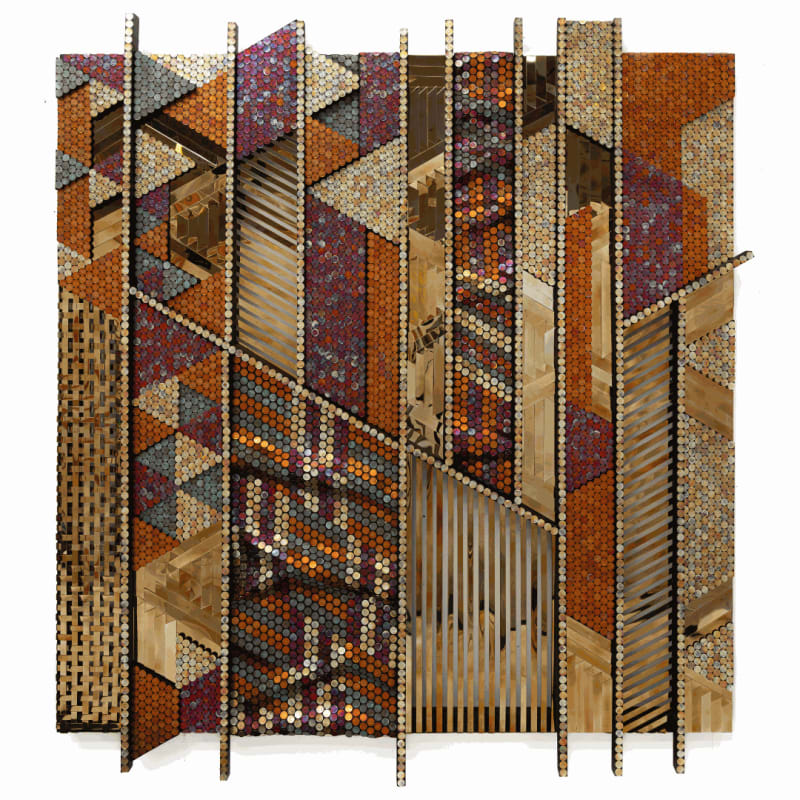Yaw Owusu - Everything You Touch is Gold: Gallery II, Accra
Yaw Owusu’s ‘Everything You Touch Is Gold’ at Gallery 1957 comprises a series of coins on wooden panels and canvas which in their intriguing interplay of colour, texture and abstract patterns call to mind the traditional craftsmanship of Ghanaian kente. Just as traditional wax-resist dyeing of fabric makes use of readily available materials such as cotton, beeswax, and the plants from which the various vegetable dyes are made, so Owusu’s fabrics use copper-coated steel coins, from whose natural textures and colours he achieves his desired effect. Owusu starts with the coins’ basic geometric form, the circle. From this, concentric patterns emerge, transforming into arresting geometric arrangements which become the basis of his questing for meaning and value mediated through the signifier of the coin, the universal democratic unit of economic exchange.
Within the intricate tapestry of value systems, the works in ‘Everything You Touch Is Gold’ are thought-provoking explorations of the interconnected concepts of capital and value, trade and exchange, currency, and design. Owusu's art interrogates value both as a construct and as a driving force in our globalised world. It is presented as a vulnerable organism mutating within multiple socio-political and historical contexts.
The first premise, is the location and situation of the coin as a medium—its, circumstances and materiality. The coins do not have anything to do with the often-misattributed concept of recycling, the postcolonial narrative that suffocates art from Africa. Owusu’s use of the coin as an art form is entirely aside and part from anything to do with the idea of improvements on the aesthetics of trash—to be sure, in fact represents the very opposite. For the coin, its devaluation as a meaningful currency, as a medium of trade, is lost with the international fiscal controls imposed on African nations. The coin and its attributive value follow a trace in history, common to post-colonial Africa, of the continuous devaluation of the medium of exchange. Their composition — of copper-coated steel rather than copper — and their outward denominations — wherein the same coin is used to represent forever increasing denominations of a perpetually inflating currency — attest to the degradation of economic conditions. Secondly, Owusu’s work is a subtle rebuke to the location of its production. Today, Ghana’s coins are made by the Royal Canadian Mint and shipped to Ghana. That these Ghanaian coins are produced in Canada illustrates the persistence of colonial dynamics decades after Ghana fought for and gained Independence in 1957.
- Extract from curatorial text by Azu Nwabogu







